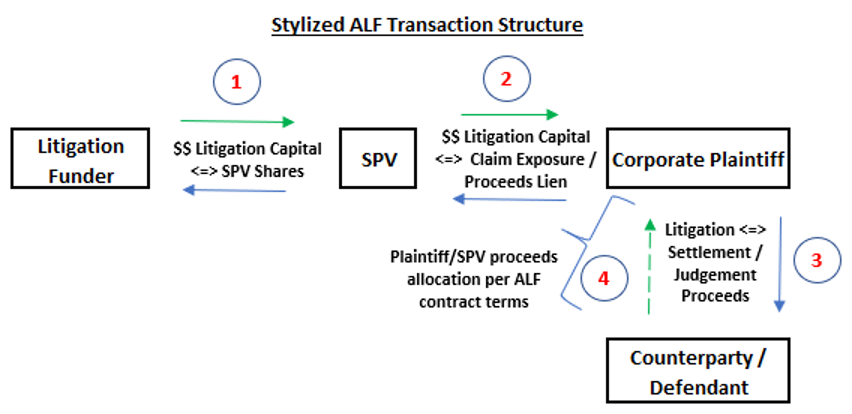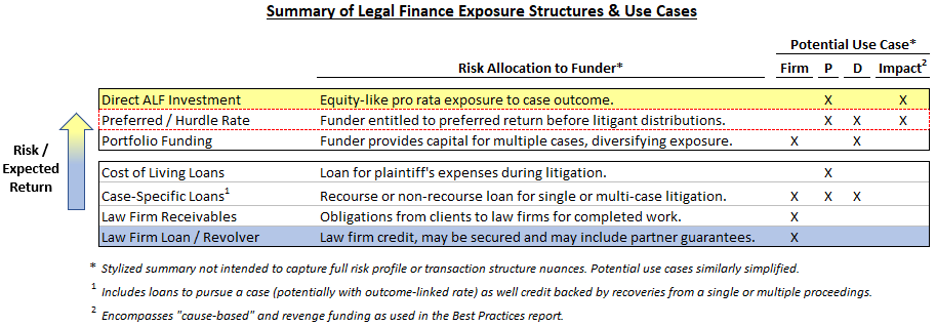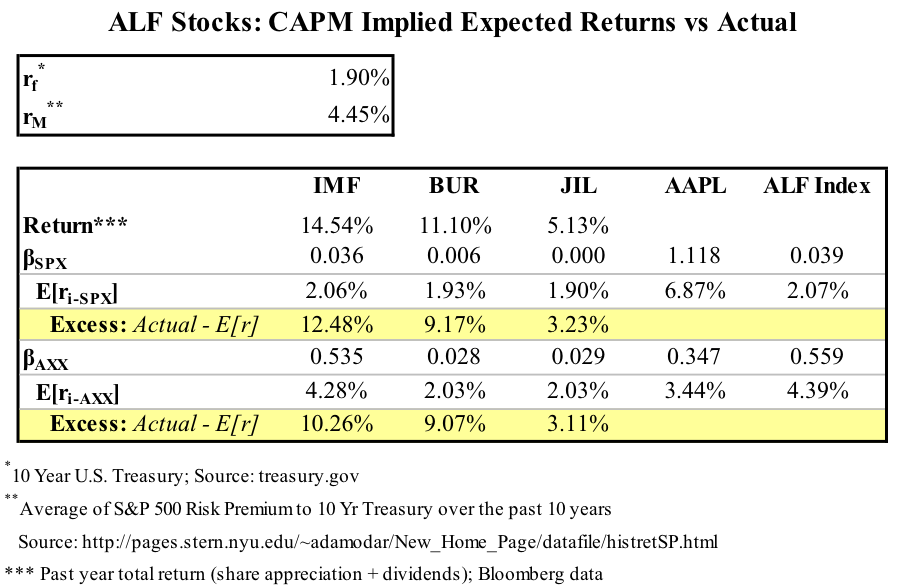The COVID-19 pandemic has turned nearly every facet of American life on its head, and the long-term social changes it will bring about remain up in the air.* Even after the economy recovers from the disease’s current impact, many employers could permanently enact far-reaching changes to how—and where—people work. As more employers discover that employees can adequately perform their duties remotely, they may reevaluate the need for expensive office space, which could lead to increased Chapter 11 filings by the owners of office buildings, office parks, and single-asset real estate debtors.
Against this backdrop, bankruptcy courts can expect increased litigation over the use of post-petition rents as cash collateral to pay administrative expenses and fund business reorganizations plans. Most commercial landlords have mortgages encumbering the space leased to tenants, and the mortgages typically include an assignment-of-rents clause. A common dispute in Chapter 11 bankruptcies centers around whether the assignment-of-rents clause transfers immediate ownership of rents to the lender or merely gives the lender a security interest in the rents. State law controls the issue. See, e.g., Butner v. United States, 440 U.S. 48, 55 (1978).
The Sixth Circuit has not considered how bankruptcy courts should treat assigned rents under Ohio law. However, it overruled a bankruptcy court’s treatment of the rents as property of the bankruptcy estate under Michigan law, finding that the debtor’s assignment-of-rents to the lender transferred ownership before the debtor filed its bankruptcy petition. See Town Center Flats v. ECP Commercial, 855 F.3d 721 (6th Cir. 2017). A close review of Ohio state court opinions suggests that similar reasoning may apply to property in Ohio depending on the assignment’s specific language. See, e.g., Banks v. Heritage, 2014-Ohio-991 (12th Dist.). This would effectively bar Chapter 11 debtors in Ohio from using post-petition rents to fund reorganization plans or otherwise utilize the resources during the bankruptcy, and it could drastically limit debtors’ options when those rents represent their only source of revenue.
Bankruptcy Code Provisions Governing Rents as Cash Collateral
With some exceptions, when a business debtor files a Chapter 11 bankruptcy, all of its property becomes part of the bankruptcy estate, including rents earned from its property. See 11 U.S.C. §§ 541(a)(1), (6), 1115(a). The debtor, acting as the bankruptcy estate’s trustee (the “debtor in possession”), may continue to operate the business, and it can use property of the estate—including unencumbered future rents—in the ordinary course of business without the bankruptcy court’s approval. 11 U.S.C. §§ 363(c)(1), 1108. It can also use unencumbered rents that are property of the estate to pay administrative expenses and to fund its reorganization plans. See, e.g., First Fidelity Bank v. Jason Realty, 59 F.3d 423, 426 (3rd Cir. 1995).
If any entity other than the debtor has an interest in cash or “cash equivalents” earned from the debtor’s pre-petition property, the Bankruptcy Code deems the cash or its equivalents “cash collateral.” See 11 U.S.C. § 363(a). The Code includes post-petition rents earned from mortgaged pre-petition property as cash collateral “to the extent provided in [the] security agreement, except to any extent that the court, after notice and a hearing and based on the equities of the case, orders otherwise.” 11 U.S.C. § 552(b)(2). The debtor cannot use cash collateral without the lender’s consent unless the bankruptcy court authorizes the use. 11 U.S.C. § 363(c)(3). If the lender requests, the court must require the debtor to provide the lender with adequate protection to use the cash collateral. 11 U.S.C. § 363(e).
Of course, rents qualify as cash collateral only if they are also property of the bankruptcy estate. See, e.g., 11 U.S.C. § 363(a). Thus, if the debtor transferred ownership of the rents to another entity before it filed the bankruptcy petition, then the rents are not the estate’s property, and the debtor cannot use them as cash collateral regardless of whether it provides the lender adequate protection. See, e.g., Jason Realty, 59 F.3d at 427. In the assignment-of-rents context, the question typically boils down to whether the assignment granted the lender a security interest in the rents or transferred ownership of the rents to the lender. Id.
General Types of Assignment-of-Rents Clauses
Assignments of rents in a commercial mortgage generally take two different forms. See, e.g. In re South Side House, 474 B.R. 391, 402-03 (E.D.N.Y. Bankr. 2012). The mortgage’s granting clause may include language to the effect of “[mortgagor] hereby grants, bargains, sells, and conveys to [lender] all estates, right, title and interest in [property], together with all privileges and appurtenances to the same, and all rents, issues, and profits thereof.” Under this language, the mortgagor conveys the rents to the lender along with the property as security for the mortgage loan, but title to the rents remains with the mortgagor. Id. at 403.
The mortgage—or a separate document executed with the mortgage—may also assign the rents to the lender immediately, and the lender then leases the right to collect and use the rents back to the mortgagor. Id. The lease-back provision ordinarily terminates automatically without any action required by the lender if the mortgagor defaults. Some mortgages include both types of language, i.e., a pledge of the rents as additional security for the debt and an immediate transfer of the rents with a lease-back provision.
The Sixth Circuit’s Assignment-of-Rents Rulings
The Sixth Circuit has not considered whether assigned rents qualify as property of the bankruptcy estate under Ohio law. However, it has considered the issue under Kentucky and Michigan law, reaching different conclusions for each state. See Town Center, 855 F.3d at 724–28; In re Buttermilk Towne Center, 442 B.R. 558, 562–64 (6th Cir. B.A.P. 2010). Applying the Sixth Circuit’s analysis of Kentucky and Michigan law to Ohio state court rulings on assignments of rent suggests that bankruptcy courts applying Ohio law should not treat assigned rents as estate property for absolute assignments that then lease the rents back to the debtor.
In Buttermilk, the owner of a commercial real estate development project that leased space to rent-paying tenants in Kentucky entered into a construction financing agreement with the lender. In connection with the financing agreement, the owner assigned the rents derived from the project to the lender subject to a license allowing the owner to collect and use the rents so long as he did not default on his obligations under the financing agreement.
After defaulting on the agreement, the owner filed Chapter 11 bankruptcy and sought to use the rents as cash collateral. The lender objected, arguing that the bankruptcy court should not treat the rents as property of the bankruptcy estate. The bankruptcy court disagreed, holding that the rents belonged to the estate and constituted cash collateral. It later ruled that a replacement lien on the rents would adequately protect the lender’s security interest. The Sixth Circuit’s Bankruptcy Appellate Panel affirmed the bankruptcy court’s treatment of the rents as estate property, but it reversed the court’s allowance of a replacement lien as adequate protection.
On the rent ownership issue, the panel relied on an earlier Sixth Circuit ruling discussing Kentucky law and holding that “the entire tenor and affect of an instrument pledging rents” in Kentucky “is that such a pledge is deemed secondary security, with the lien continuing as an inchoate right which will be and must be perfected or consummated by . . . some definite action looking toward possession and subjection.” The panel noted that the lender could not provide any Kentucky law contradicting the Sixth Circuit’s previous discussion, and it held that “[e]ven if the assignment gave [the lender] a right to possess the rents pre-petition, the assignment . . . did not give [the lender] an absolute ownership of the rents.”
More recently, the Sixth Circuit interpreted Michigan law to reverse a bankruptcy court’s ruling that included assigned rents in the bankruptcy estate. See Town Center, 855 F.3d at 728. In Town Center, a company owned a large residential complex that it built with a construction loan. The company secured the loan with a mortgage and an assignment of rents. Under the assignment, the company “irrevocably, absolutely, and unconditionally [agreed to] transfer, sell, assign, pledge, and convey” the rents to the lender. The agreement also “grant[ed] a license to [the company] to collect and retain rents until an event of default, at which point the license would ‘automatically terminate without notice to [the company].’”
After the company defaulted on the loan, the lender filed a foreclosure action in state court, and the company filed a Chapter 11 bankruptcy petition. The lender moved to prohibit the company from using post-petition rents on the grounds that they were not property of the bankruptcy estate. The bankruptcy court denied the motion, ruling that the rents qualified as cash collateral and requiring the company to provide adequate protection to the lender. The Sixth Circuit reversed, interpreting the contract language to have assigned the lender ownership of the rents.
The Sixth Circuit began by analyzing Michigan law on assignment of rents, which had traditionally forbade mortgage assignment-of-rents clauses until the state legislature enacted a law specifically allowing them. Noting that “Michigan courts generally discuss assignments of rents under [the applicable statute] as ownership transfers,” the Sixth Circuit discussed two appellate-level Michigan opinions holding that “the assignor loses any right to collect the rents after the assignee has perfected its rights [under the statute] following an event of default.” The court therefore held that the rents belonged to the lender, and the bankruptcy court wrongly considered them property of the estate, despite also recognizing that the ruling limited single-asset real estate debtors’ options under Chapter 11.
As noted, the Sixth Circuit has not addressed the assignment-of-rents issue under Ohio law. State courts in Ohio appear to treat general assignments of rents included in the mortgage’s granting clause differently from assignments that immediately transfer ownership and lease the rents back to the mortgagor. Compare, e.g., Hutchinson v. Straub, 64 Ohio St. 413 (1901) with Banks v. Heritage, 2014-Ohio-991. Accordingly, bankruptcy courts applying Ohio law should arrive at different results depending on the specific type of assignment-of-rents clause.
Ohio Law on General Rent Assignments in the Granting Clause
Ohio courts interpreting mortgages that convey rents as additional security in the granting clause mostly hold that mortgagors retain ownership of the rents until the lender takes possession of the property or otherwise asserts its rights to the rents. See, e.g., In re Pfleiderer, 123 B.R. 768, 769–70 (N.D. Ohio Bankr. 1987). In Ohio, rents are not included in the mortgage unless specifically pledged, and the lender must still take some action to exert control over the rents even when the mortgage specifically pledges them. Id. (quoting 69 O. Jur. 3d Mortgages § 151 (1986)).
In Hutchinson, the debtor gave her lender a mortgage conveying property to secure the debt “and all the rents, issues and profits thereof.” In state court insolvency proceedings, the plaintiff took assignment of the property for the benefit of creditors, and it collected rents from the property during a land sale action in the probate court. After the sale, the trial court ordered the plaintiff to pay the rents to the lender to satisfy the mortgage rather than the unsecured creditors. The plaintiff appealed, and the Ohio Supreme Court affirmed.
The court rejected the plaintiff’s position that the lender had no right to the rents because it never took actual possession of the property or sought to have a receiver appointed as plausible but unsound. The court acknowledged the traditional rule that “the mortgagor has the right to receive as his own the rents of real estate so long as he remains in possession,” but it found that “the [debtor] in this case yielded possession to one who took the property burdened with the duty to administer it for the benefit of creditors.” The court further noted that although lenders ordinarily seek a receiver to enforce their right to the rents, the pending probate action precluded the lender from doing so, and the assignee for the benefit of creditors served the same function of a receiver. See also In re Cordesman-Rechtin, 66 Ohio App. 25, 27–28 (1st Dist. 1940) (discussing Hutchinson and distinguishing cases where the mortgage did not assign rents). Accordingly, the court upheld the trial court’s order requiring the plaintiff to pay the rents it collected to the lender.
Ohio courts interpreting Hutchinson confirm that its rule applies regardless of whether a separate legal proceeding prevents the lender from seeking to appoint a receiver. See Perin v. N-Ren, CA87-09-014, 1988 Ohio App. LEXIS 2089 *10 (12th Dist. May 31, 1988). In Perin, a farmer sold land to a purchaser, who gave the farmer a mortgage pledging “rents, issues and profits” to secure the purchase price. The purchaser then agreed with a third party to allow him to grow tobacco on the land in exchange for a portion of the proceeds from the tobacco. The purchaser filed bankruptcy after defaulting on her mortgage to the farmer, and the farmer secured permission from the bankruptcy court to proceed with foreclosure.
Although the foreclosure remained pending, the farmer obtained a preliminary injunction preventing the third-party tobacco grower from paying the proceeds of the tobacco sales to the purchaser, but she did not seek a receiver. After the foreclosure sale, the trial court found that the tobacco proceeds constituted rents, and it ordered them paid to the farmer. The purchaser appealed, and the appellate court affirmed.
The court rejected the purchaser’s argument that the farmer had no right to the rents because she never had a receiver appointed. It found that even though nothing prevented the farmer from seeking a receiver, the Ohio Supreme Court’s ruling in Hutchinson still controlled. Noting that “[r]eceivership is not the only process by which a court can take control of mortgaged property,” it held that “[a] mortgagee of real property is entitled to the rents and profits of the mortgaged premises when he takes actual possession of the property, when possession is taken on his behalf by a receiver, or when he demands such possession.” The court determined that the farmer’s motion for a temporary injunction “was an act compatible with the right she claimed [to the rents] and equivalent to a demand for possession.”
Ohio Law on Immediate Rent Assignments with Lease-Back Provisions
In contrast to these rulings, Ohio courts have construed assignments that immediately transfer the rents to the lender differently. See, e.g., Banks, 2014-Ohio-991, ¶¶ 22–24. In Banks, mobile home residents brought a class action against the management company that owned three separate mobile home parks. The lender for one of the parks intervened and had a receiver appointed to collect the residents’ rents after the management company defaulted on its mortgage loan for one the parks. The lender subsequently accepted a deed in lieu of foreclosure. When the lender sought the rents the receiver collected, the trial court refused, finding that the deed in lieu of foreclosure satisfied the lender’s mortgage loan. The appellate court reversed.
Under the language in the assignment of rents, the management company conveyed “all right, title and interest of [the company] . . . together with . . . all rents, receipts, revenues, income, and profits which may now or hereafter be or become due.” (Emphasis removed.) The agreement further provided that “[t]his Assignment is absolute and is effective immediately,” but it allowed the management company to “receive, collect, and enjoy the rents” until “a default has occurred, and has not been cured.” (Emphasis removed.) Upon default, the lender could “at its option, without notice to [the management company], receive and collect all such rents . . . as long as such default or defaults shall exist.” (Emphasis removed.)
Construing this language, the appellate court found that the rents “became the exclusive property of [the lender] upon [the mortgage company’s] default.” Accordingly, given that the lender “owned the funds that were held by the receiver pursuant to the Assignment of Rents agreement, the deed in lieu of foreclosure did not release [the lender]’s ownership interest in such funds.” The court therefore ordered the receiver to turn over the rents it had collected since its appointment, which was all the funds at issue in the case, because the rents “were the property of [the lender].” See also U.S. Bank v. Gotham King Fee Owner, 2013-Ohio-1983, ¶ 21 (8th Dist.) (mortgagor not entitled to notice of receiver’s changes to leases because “its license in the rents and leases automatically terminated upon default”).
Effectuating the terms of more specific assignment-of-rents clauses over general language from the mortgage’s granting clause also conforms to well-established contract rules recognized in Ohio. Ohio courts consistently treat the more specific terms of a contract as controlling over the more general terms. See, e.g., Vanderink v. Vanderink, 2018-Ohio-3328, ¶ 26 (5th Dist.); Pierce Point Cinema v. Perin-Tyler, 2012-Ohio-5008, ¶ 17 (12th Dist.). Thus, the more specific assignment terms immediately transferring the rents and leasing them back to the mortgagor should control over any more general terms pledging rents as additional security.
Even if the more specific terms did not control, Ohio—like most states—construes contracts as a whole and gives effect to all of their terms if possible. See, e.g., Prudential Ins. Co. v. Corporate Circle, 103 Ohio App. 3d 93, 98 (8th Dist.). Mortgage-granting clauses typically grant the mortgagor’s rights in the property to the lender along with any profits or rents flowing from the property. Assigning the rents subject to a lease-back provision does not invalidate that language in the granting clause. It simply removes the right to collect and use the rents from the “bundle of sticks” the mortgagor conveyed to secure the debt. After the assignment, that right belongs to the lender, who leases it back to the mortgagor with a lease that automatically terminates if the mortgagor defaults. Interpreting the mortgage to only pledge the rents as additional security would improperly read the more specific assignment-of-rents term out of the mortgage altogether.
Harmonizing Ohio’s Assignment-of-Rents Caselaw
Reading these cases together suggests that Ohio law treats three different assignment-of-rents scenarios differently. In the first scenario, the mortgage contains no pledge of rents or separate assignment-of-rents clause. There, the rents still follow title to the property, but the lender would not have a right to rents while a foreclosure action remained pending and the mortgagor still had a right to redeem. See Commercial Bank v. Woodville, 126 Ohio St. 587, 592 (1933). The same rule may follow if the lender took legal possession of the property through ejectment. Id. at 591 (“the right to rents . . . follows the legal title and right to possession”) (internal quotations omitted).
Notably, this line of reasoning also conforms to longstanding Ohio mortgage foreclosure law. In Ohio, title to the property as between the mortgagor and the lender passes to the lender upon default, but title as between the mortgagor and the rest of the world remains with the mortgagor until the lender completes a foreclosure action or takes possession through ejectment. See, e.g., Hausman v. City of Dayton, 73 Ohio St. 3d 671, 675–76 (1995). Inasmuch as rents arise from title between the mortgagor and its tenants, not between the mortgagor and the lender, the title giving rise to the rents remains with the mortgagor until the lender either forecloses or ejects.
In the second scenario, the mortgage specifically pledges the rents as additional security for the debt, but it has no separate assignment immediately transferring the rents to the lender. There, the lender has rights to the rents before foreclosing the mortgagor’s redemption rights, but it must have a receiver appointed or take some other action to exert dominion over the rents. See, e.g., Perin, 1988 Ohio App. LEXIS 2089 *10. Inasmuch as at least one Ohio court holds that a lender “is entitled to the rents and profits of the mortgaged premises . . . when he demands [ ] possession,” a simple demand letter to the mortgagor could suffice to meet this requirement. Id.
In the third scenario, the mortgage—or a separate contemporaneous document—immediately assigns the rents to the lender and leases them back to the mortgagor with the lease to expire upon default without additional action needed from the lender. There, the lender owns the rents immediately upon default without needing to foreclose or eject, seek appointment of a receiver, or take any other action to exert dominion over the rents. See, e.g., Banks, 2014-Ohio-991, ¶ 22; Gotham, 2013-Ohio-1983, ¶ 19. Cf. GLIC Real Estate v. Bicentennial Plaza, 2012-Ohio-2269, ¶ 26 (10th Dist.) (refusing to extend the general rule that courts treat a conveyance made for security as a mortgage to an assignment of leases that transferred immediate ownership).
Importantly, a receiver collected the rents at issue in both the Banks and Gotham cases cited above, which could support the position that lenders must still take possession or appoint a receiver before owning the rents, notwithstanding the specific contract language to the contrary. However, Banks and Gotham did not treat the receiver as the determinative fact. Instead, both relied on Ohio contract law and specifically held that the rents became the lender’s property when the mortgagor defaulted. See Banks, 2014-Ohio-991, ¶ 22 (“Pursuant to [the contract], the funds became the exclusive property of [the lender] upon [the mortgagor]’s default on the promissory note.”); Gotham, 2013-Ohio-1983, 19 (mortgagor “lost any interest it had in the leases and rents” when its license to the rents “terminated automatically upon default”).
Ohio’s Assignment-of-Rents Case Law in the Chapter 11 Context
Applying this law in the context of a Chapter 11 debtor’s ability to use rents for reorganization should yield different results for each scenario. In the first scenario, bankruptcy courts should allow debtors to use the rents without court authorization regardless of whether the lender consents. Title to the property that produced the rents belonged to the debtor when it filed the bankruptcy petition, and the rents are not provided for “by [the] security agreement” under Ohio law because the debtors did not specifically pledge them as additional security. Thus, they belong to the bankruptcy estate and are not cash collateral. See 11 U.S.C. §§ 541(a)(1), 552(b)(2).
In the second scenario, bankruptcy courts applying Ohio law should treat the rents as part of the bankruptcy estate and the lender’s cash collateral, unless the lender successfully had a receiver appointed or made a demand for the rents before the debtor filed the bankruptcy petition. The debtor conveyed the rents in the mortgage as additional security for the debt, but it continues to own the rents until the lender has a receiver appointed or takes other appropriate action. See, e.g., Perin, 1988 Ohio App. LEXIS 2089 *10. However, if the lender took such action before the debtor filed the petition, the court should not treat the rents as property of the estate under Ohio law because the debtor no longer owned them when it filed the petition. Id. at *7.
In the third scenario, bankruptcy courts applying Ohio law should treat the rents as belonging to the lender and therefore not property of the bankruptcy estate, regardless of whether the lender had a receiver appointed or took any other action to exercise control over the rents. The debtor assigned the rents to the lender immediately upon executing the mortgage, and its only remaining interest in the rents consisted of the lender’s lease back to the debtor. See, e.g., Banks, 2014-Ohio-991, ¶ 22. That lease expired upon default, and the debtor therefore held no interest in the rents when it filed the bankruptcy petition. Id.
This reasoning should hold under Town Center and Buttermilk, regardless of Ohio’s status as a so-called lien theory state. The Sixth Circuit’s analysis in Town Center rested on its determination that Michigan law “allow[ed] for assignments of rents to be transfers of ownership once the statutory steps for perfection have been completed.” Town Center, 855 F.3d at 726. Accordingly, given that the court read the mortgage language as “assign[ing] the rents to the maximum extent permitted by Michigan law,” it held that the debtor transferred ownership of the rents. In contrast, the court specifically noted in Buttermilk that the lender could “not present[ ] any Kentucky case law that contradict[ed]” its earlier ruling that assignments of rents under Kentucky law constituted only “secondary security” the lender must perfect by taking “some definite action looking toward possession and subjection.” (Internal quotations omitted.)
Like Kentucky, Ohio case law recognizes a general rule that treats assignments of rents in the granting clause as additional security requiring the lender to take some action to perfect before acquiring ownership. See, e.g., Hutchinson, 64 Ohio St. at 415–17. However, like Michigan, Ohio case law also allows assignments of rents to constitute immediate transfers of ownership depending on the language in the mortgage contract. See, e.g., Banks, 2014-Ohio-991, ¶ 22; Gotham, 2013-Ohio-1983, ¶ 19; GLIC Real Estate, 2012-Ohio-2269, ¶ 26. Thus, applying the Sixth Circuit’s analysis in Town Center, the more specific language in immediate assignments with lease back provisions should control, and bankruptcy courts should not consider the rents estate property.
Conclusion
Many Ohio bankruptcy courts treat assigned rents as cash collateral even when the contract language immediately transfers the rents and leases them back to the debtor. Yet, a close review of Ohio case law read with Sixth Circuit precedent may call that practice into question. As bankruptcy filings increase from owners of commercial office property, parties can expect to litigate these issues more, and some Chapter 11 debtors may find themselves without cash collateral to pay expenses and fund reorganization.
* This article is not intended as and should not be considered legal advice.











